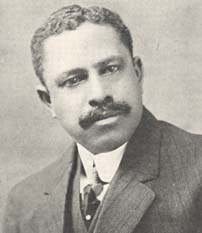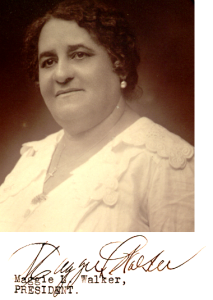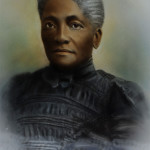“As long as it is God’s will, I want this institution to move, for men to support their families; and God will let it live. That is what I am interested about and God knows it. I want this institution to live and she will!”—John Merrick
 The North Carolina Mutual Life Insurance Company is the United States’ oldest black-owned business and was for decades the largest. It was built by John Merrick and a consortium of black North Carolinians. Merrick was born into slavery in 1859. By age 12, he was working in a brickyard to help support his family. He would become a brickmason but opted to work as a bootblack because he wanted to learn about barbershops which thought would offer the best opportunity for entrepreneurship. He left Raleigh for the less established Durham for similar reasons. By 1881 Merrick would own a share of a barbershop and a growing real estate portfolio. In time, he would own as many as nine barbershops and co-own the Merrick-Moore-Spaulding Land Company.
The North Carolina Mutual Life Insurance Company is the United States’ oldest black-owned business and was for decades the largest. It was built by John Merrick and a consortium of black North Carolinians. Merrick was born into slavery in 1859. By age 12, he was working in a brickyard to help support his family. He would become a brickmason but opted to work as a bootblack because he wanted to learn about barbershops which thought would offer the best opportunity for entrepreneurship. He left Raleigh for the less established Durham for similar reasons. By 1881 Merrick would own a share of a barbershop and a growing real estate portfolio. In time, he would own as many as nine barbershops and co-own the Merrick-Moore-Spaulding Land Company.
His start in insurance came with his purchase of the Royal Knights of King David, a benevolent society providing burial insurance. In 1898, this became the North Carolina Mutual Insurance Company. At the start, the company was on life support. For years, it depended on infusions of cash from Merrick and other prominent African Americans in the Raleigh-Durham area. However, through the dedicated and able management of Charles Spaulding—a young nephew of Dr Aaron Moore, Merrick’s partner in the land company—NC Mutual was saved and survives to this day.
Merrick was also an early investor in the Mechanics and Farmers Bank, a co-founder of the Bull City Drug company and the Durham Textile mill (which failed due to poor management soon after Merrick’s death). NC Mutual continues to serve thousands of North Carolinians.
By remaining resolute in a hostile environment, meeting the challenges of turning around a failing institution and being willing to try new and varied things despite/because of youth and limited education, John Merrick exemplifies the resilient entrepreneur.
For more on Merrick see R. McCants Andrew’s biography at UNC’s Documenting the American South
In honor of Black History Month, our regular Tuesday and Friday posts will highlight black entrepreneurs who have displayed exemplary success and resilience.


